
Hello mama, so you’re thinking about introducing solid foods to your baby, huh? There are a few different ways to go about it – purees, baby-led weaning (BLW), combination, and traditional weaning.
And, it looks like baby-led weaning is becoming more and more popular among parents. But, what exactly is baby-led weaning? And what makes it such a great choice?
In this blog post, let’s dive into baby-led weaning method and see if it’s the best fit for your little one.
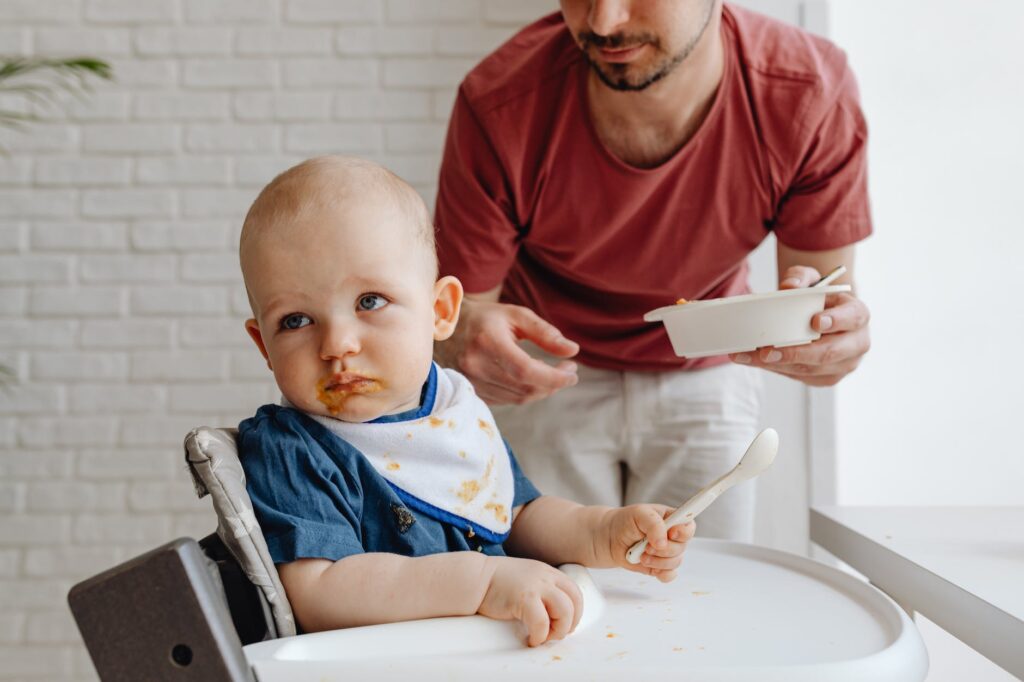
What is Baby-Led Weaning?
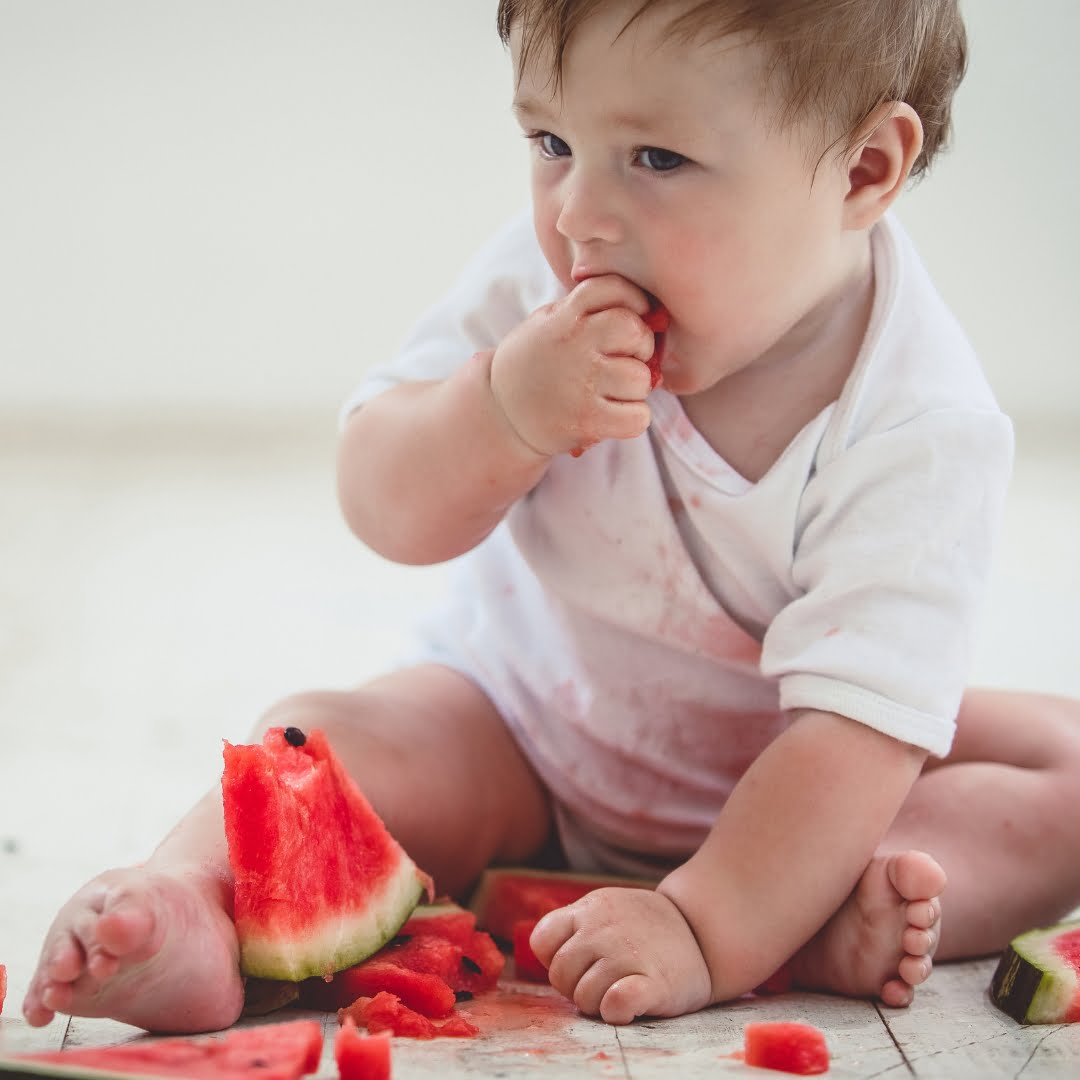
Baby-led weaning (BLW) is a method of introducing solid foods to a baby in which the baby is allowed to feed themselves with finger foods, rather than being spoon-fed pureed food. Different from traditional spoon-feeding, BLW method encourages the baby to self-regulate their food intake and develop healthy eating habits while enjoying the original taste of a variety of foods. This approach usually begins when the baby is around 6 months old and is able to sit up and reach for food. Babies can develop their own taste preferences, learn about food textures, and gain the very first important life skills such as chewing, swallowing, and hand-eye coordination.
When should you start Baby-Led Weaning?
Generally speaking, parents can begin BLW around six months of age when the baby can sit upright with minimal support and has good head control. But always make sure to check with your pediatrician first to see if your baby is ready. And of course, always keep a watchful eye during mealtime to make sure your little one stays safe and doesn’t choke.
What foods do you start Baby-Led Weaning with?
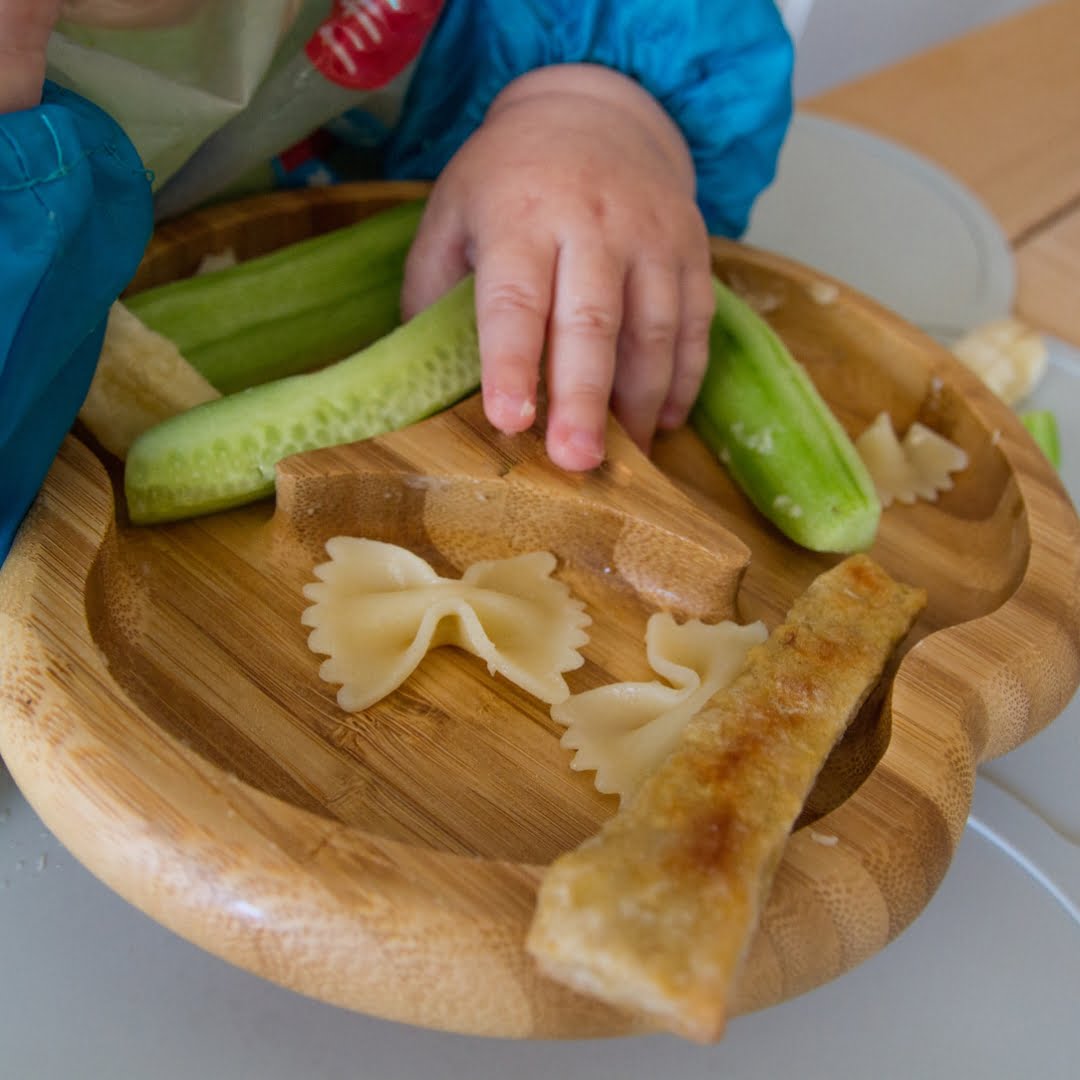
When it comes to baby-led weaning recipes, there’s a ton of tasty and nutritious options to choose from. Think fruits, veggies, proteins, grains, dairy, etc. as they are all suitable for this method. Just make sure you start with foods that are easy for the little one to grasp and hold, and that can be easily gummed or mashed between the gums. Some great options of suitable first foods for BLW are:
- Soft fruits such as banana, avocado, and ripe pear
- Steamed or roasted vegetables such as sweet potato, pumpkin, and carrot
- Soft-cooked or mashed beans, peas, and lentils
- Soft-cooked or mashed meat or fish
- Soft-boiled or scrambled eggs
- Soft bread or toast
It’s important to note that babies should not be given foods that are hard, sticky, or have a texture that could pose a choking hazard. Examples of foods that should be avoided include nuts, seeds, popcorn, raw vegetables, hard fruits, and chunks of meat or cheese.
Do babies actually eat with Baby-Led Weaning?
As a parent, you might be surprised to find out that your baby following this weaning approach might eat less than a baby who is spoon-fed pureed food. But that’s okay! The baby is in control of how much they eat and it may not be as much as you expect. But don’t worry, they’re still getting the nutrition they need for growth and development. Some babies take to this method quickly and eat well, while others may need more time to adjust. Remember, this method is not a strict or prescriptive approach, so be patient and don’t force your baby to eat. Offer a variety of healthy food options and don’t rely on just one food item.
Pros & Cons of Baby-Led Weaning
Baby-Led Weaning is a controversial topic as there are both positives and negatives associated with it. Before starting BLW, it is important to research what foods are suitable for your baby’s age and to ensure that you are aware of the risks.
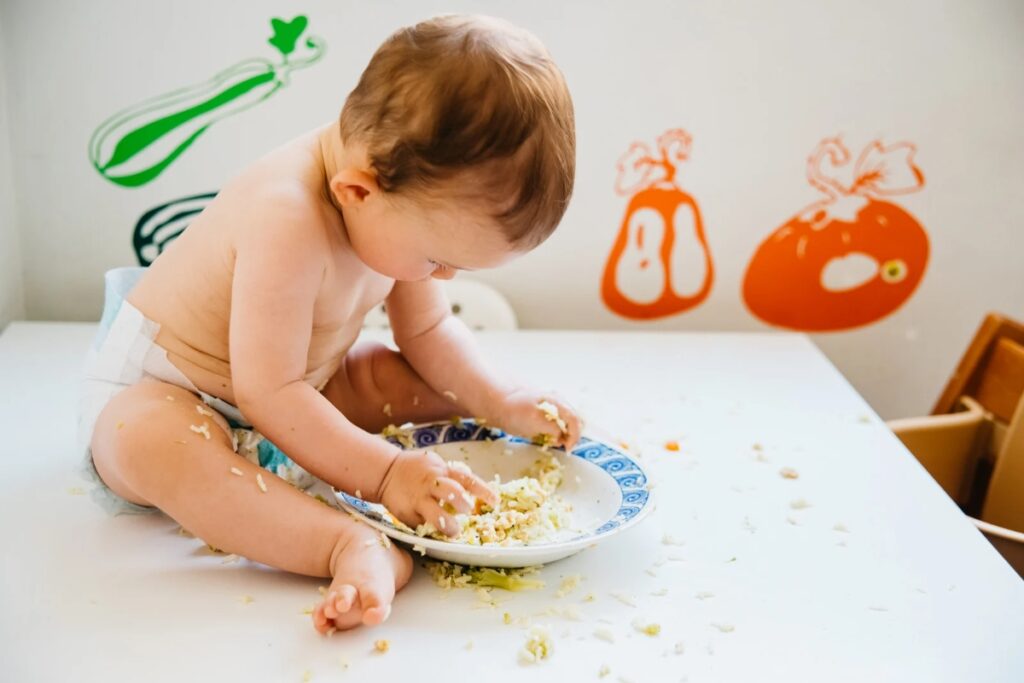
What are the benefits of Baby-Led Weaning?
Some potential benefits of BLW, comparing to other feeding methods, include:
- Encourages self-regulation: With baby-led weaning, babies are in control of the amount of food they eat, rather than being fed by someone else. This allows them to learn and recognize their own hunger and fullness cues, helping them to develop healthy eating habits for life.
This way, babies are less likely to overeat and more likely to listen to their body’s signals. This can help to prevent issues such as picky eating and overeating in the future, as they learn to trust their own instincts when it comes to food. - Promotes independence: Baby-led weaning promotes independence in many ways, and can help babies develop their fine motor skills, hand-eye coordination, and overall independence with eating.
Babies are encouraged to feed themselves, which can help to develop their fine motor skills as they grip and manipulate food. Hand-eye coordination is also improved as babies learn to bring the food to their mouth and coordinate their movements, which is beneficial for them to develop important skills for later in life, such as writing and drawing. - Allows for a variety of foods: Baby-led weaning allows for a much wider variety of foods than traditional spoon-feeding methods, which can be beneficial for a number of reasons. Firstly, by exposing babies to a variety of flavors and textures, they are more likely to develop a taste for a range of foods. This can help them to develop healthy eating habits and a diverse palate in the future.
Not only that, BLW typically involves offering whole foods in their natural form, rather than processed or pureed foods. Babies are less likely to consume processed foods and added sugars, which can have negative health impacts over time. Instead, they are exposed to the natural flavors and textures of fruits, vegetables, and other whole foods, which can help them to build a healthy relationship with food. - Encourages family mealtimes: Another benefit of baby-led weaning is that it can encourage a more family-style approach to eating, where babies sit and eat with the rest of the family. This can help to foster a sense of community and togetherness around meals, and can also make meal times more enjoyable for both babies and parents. And also, you won’t have to worry about preparing special baby-friendly meals, it can also save you time and energy.
What are the negatives of Baby-Led Weaning?
Let’s face it, BLW isn’t all sunshine and rainbows. There are also some potential downsides to this method:
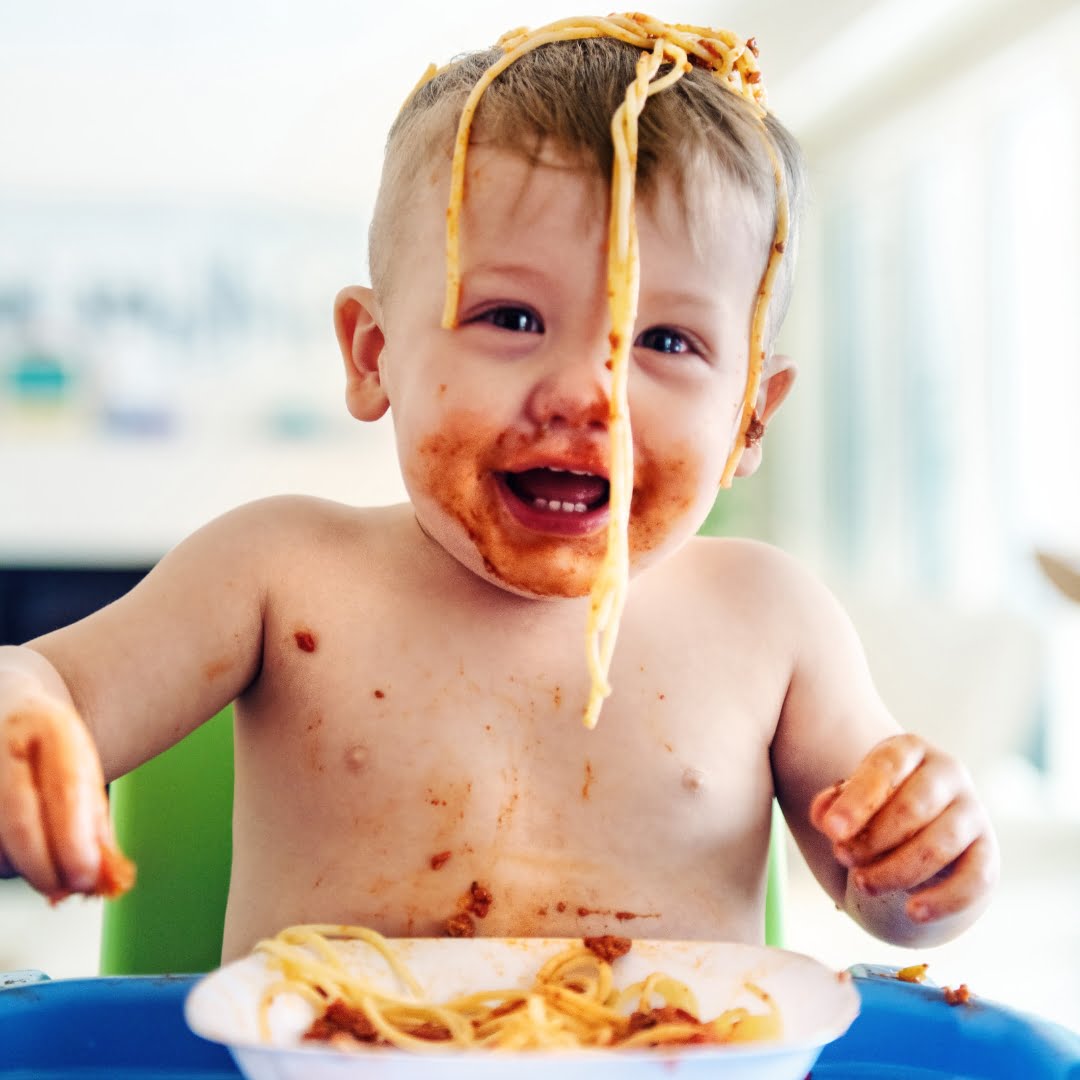
- Can be messy: What is baby-led weaning if not an incredible amount of mess?! While there are some BLW recipes that may not be as messy, it’s still a big commitment to cleaning up after your little one! You’ll also have to keep an eye on them, as they may put all sorts of things in their mouth that you’d rather not have them eating.
- Longer meal time: It takes longer meal time for BLW babies to learn how to chew food. If you’re hoping for your baby to get down to business when it comes to eating, you might be in for a surprise. While this is completely normal for the baby-led weaning process, it can be frustrating for parents who are used to spoon-feeding their baby.
- Risk of choking: BLW may pose a higher risk of choking than spoon-feeding, particularly if parents are not aware of the appropriate foods and textures to offer. There are plenty of baby weaning first foods that are suitable for babies starting at 6 months, so do your research and practice safety first!
- May not meet nutrient needs: BLW can make it more challenging for parents to ensure that their babies are getting all the nutrients they need, particularly if the baby is not eating enough or is not interested in certain foods.
It’s important to consider your own lifestyle and parenting style when deciding whether to use baby-led weaning method.
Risk of Choking
Contrary to what some people might think, there’s no evidence that BLW is any more likely to result in choking than spoon-feeding. The NHS confirms that there’s no extra risk of choking when babies feed themselves, compared to when they’re fed with a spoon.
Remember, all babies have a strong gag reflex, and it’s important to know the difference between choking and gagging. If your baby gags, they might cough, make noises, turn red, or even retch, but if they’re choking, they’ll be quiet and their face might turn pale or blue.
Just make sure you’re prepared and know what to do if your baby does start choking. You can consider taking a baby first aid course through NCT for extra peace of mind and also to be prepared for every situation. Below are some of the foods with high choking hazards that you should avoid when introducing solid foods to your baby.
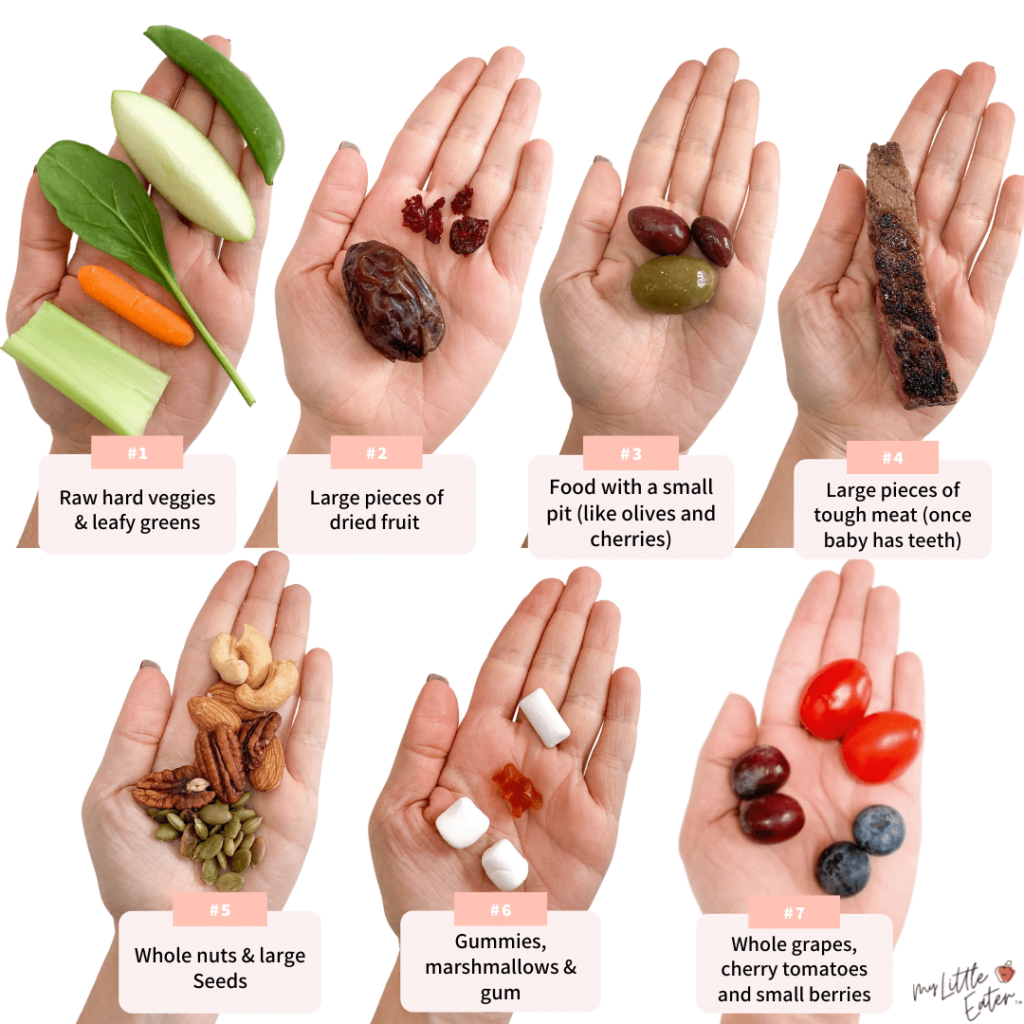
What is the no.1 food for infants to choke on?
Study shows that the number one food that infants tend to choke on is usually a piece of round food like a grape, cherry, or a small round fruit. These types of foods are particularly dangerous because they can easily get stuck in a baby’s airway and block their breathing.
So, if you’re starting with baby-led weaning, it’s always a good idea to cut round foods into smaller, manageable pieces that your little one can easily chew and swallow.
Is it normal for babies to throw up with BLW?
While the risk of choking in BLW is no more likely than in spoon-fed babies, it is normal for babies to throw up while they are transitioning to solid foods through the baby-led weaning method. This can happen when they are trying new foods, exploring textures and tastes, or just taking in too much food at once. Throwing up can also be a sign of over-excitement during feeding or simply that they have taken in too much air while eating.
When your baby vomits when starting BLW with solid foods, one simple solution to help minimize the risk of vomiting is to keep the meals apart from each other by a couple of hours. For example, if your baby has a meal at 10 AM, the next meal could be around 1 PM. This will give their digestive system enough time to process the food they’ve just eaten, reducing the likelihood of vomiting.
Remember not to feed your baby formula right before they eat solid food. Having a full tummy of formula may reduce their appetite for solid food and make them more likely to vomit. It’s best to offer solid food first and then follow up with a bottle of formula or breastmilk if needed.
Additionally, it’s important to keep in mind that some amount of vomiting is normal and not necessarily a cause for concern. However, if your baby is regularly throwing up large amounts or appears to be in distress, it’s always best to consult with a pediatrician to rule out any underlying health issues.
Points to Note When Choosing Baby-Led Weaning
Please keep in mind that BLW does not have a one-size-fits-all approach. It’s important to consider your own lifestyle and parenting style when deciding whether to use baby-led weaning. Here are a few points to note when choosing this method:
- Safety should be the top priority when choosing BLW. Make sure the foods you offer are soft, easy to chew, and cut into small, manageable pieces to prevent choking.
- Introduce a variety of textures and flavors gradually to help your baby develop a taste for different foods.
- Trust your baby’s hunger and fullness cues. Let them decide how much food to eat and when to stop.
- Avoid foods that are high in sugar, salt, and artificial ingredients.
- Be patient and don’t get discouraged if your baby doesn’t seem interested in certain foods at first. Your baby will learn at his or her own pace and with some practice, they will get the hang of eating solids before you know it.
- Be prepared for a mess! BLW can be messy, so have plenty of bibs and wipes on hand.
- Stay attentive during meal times and supervise your baby while they are eating.
- Consult your pediatrician before starting this method, especially if your baby has any health concerns.
If you’re interested in trying out Baby-Led Weaning for your baby, there are plenty of resources available online, including helpful blogs and forums as well as BLW recipes and when to start guides. Armed with this knowledge, you can confidently prepare to embark on your new BLW journey!
In summary, there is no best weaning method for all babies, as each baby is different and may have different needs. It’s important to consider your own lifestyle and parenting style when deciding whether to use baby-led weaning. Additionally, parents should talk to their pediatrician or healthcare professional about the best weaning method for their baby, based on their individual needs and preferences.